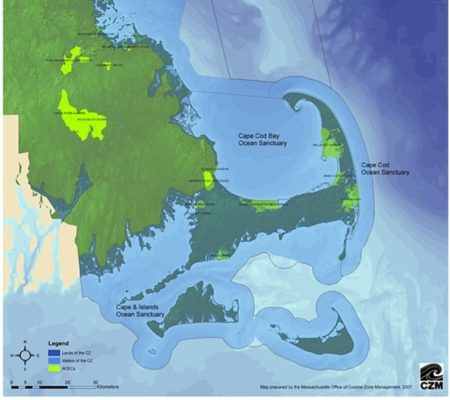A National Treasure
Nantucket Sound lacks the type of meaningful protections that apply to other ecologically significant bodies of water in the region and throughout the country.
This lack of protection is especially problematic because of the unique geographic configuration of the Sound with federal waters in the center that are almost entirely enclosed by state waters. The state waters are protected by the Commonwealth under the Massachusetts Ocean Sanctuaries Act (MOSA), but the federal waters within Nantucket Sound are not protected.
By contrast, all of Buzzards Bay and Cape Cod Bay are part of the state ocean sanctuary system and enjoy protections under MOSA. Buzzards Bay is also one of 28 bodies of water that belong to the National Estuary Program as are Massachusetts Bay, Narragansett Bay, Long Island Sound. Waquoit Bay is part of the National Estuarine Research Reserve System.
History of Efforts
Nantucket Sound State Waters
In 1971, Nantucket Sound state waters (out to 3 miles) were designated as a sanctuary under Massachusetts law. However, federal waters, the “hole in the doughnut,” remained unprotected and vulnerable to development.
National Marine Sanctuary Nomination
In 1980, Massachusetts nominated Nantucket Sound for designation as a National Marine Sanctuary (NMS). “Nantucket Sound contains significant ecological, commercial and recreational resources that have been at the heart of several past nominations for enhanced environmental protection and conservation policies within the region. The biological diversity and unique habitat areas of Nantucket Sound led the Commonwealth of Massachusetts to nominate the area for National Marine Sanctuary status […] Nantucket Sound is a recognized habitat for many state and federally protected species, including roseate terns, piping plovers, leatherback sea turtles, loggerhead sea turtles, Kemp’s Ridley sea turtles, and grey seals.” — Center for Coastal Studies, Provincetown, MA
National Marine Sanctuary Site Evaluation List
In 1983, Nantucket Sound was placed on the Site Evaluation List for NMS status.
Traditional Cultural Property
In 2010, as part of the review of Cape Wind under the National Historic Preservation Act, the National Park Service deemed Nantucket Sound a Traditional Cultural Property eligible for listing on the National Register of Historic Places.
Federal Legislation
The Alliance is seeking legislation to permanently protect Nantucket Sound by designating this special place as a National Historic Landmark.
Marine Protection
There are numerous types of marine protection available to important and threatened bodies of water. The Alliance is seeking protection for Nantucket Sound as a National Historic Landmark to protect and preserve the Sound in perpetuity while ensuring that no additional federal management or regulations affect existing uses such as fishing and recreation.
Marine protected areas (MPAs) are defined areas where human activities are managed to protect important natural or cultural resources. They serve to protect coastal and ocean habitats and species while allowing recreation There are approximately 1,000 MPAs located throughout the United States covering 26 percent of U.S. waters. MPAs include national marine sanctuaries, national marine monuments, national parks, national wildlife refuges, national estuarine research reserves and state counterparts to these programs. For example, NOAA’s national marine sanctuaries are special areas that protect important marine ecosystems around the nation. Some sanctuaries are breeding and feeding grounds for endangered whales, others contain thriving coral reefs or kelp forests, and many are home to historic shipwrecks and other archaeological treasures. There are 15 sanctuary sites in areas ranging from American Samoa to Stellwagen Bank off Cape Cod.
An estuary is an ecosystem, comprising both the biological and physical environment, that has developed in a region where rivers meet the sea and fresh-flowing river water mingles with tidal salt water to become brackish. The National Estuarine Research Reserve System is a network of 29 coastal sites designated to protect and study estuarine systems. Established through the Coastal Zone Management Act, the reserves represent a partnership program between NOAA and coastal states. NOAA provides funding and national guidance, and each site is managed daily by a lead state agency or university with input from local partners. Local examples include Waquoit Bay National Estuarine Research Reserve, designated in 1988, which protects 2,804 acres, and Narragansett Bay designated in 1980 with 4,259 acres.
The EPA National Estuary Program (NEP) is a successful ecosystem-based management program established in 1987 under the Clean Water Act to restore and maintain the water quality and ecological integrity of estuaries of national significance. There are currently 28 national estuaries including Massachusetts Bay, Narragansett Bay, Long Island Sound, and Buzzards Bay which all benefit from federal funding. To provide one example, in 1988, the EPA and the Commonwealth of Massachusetts designated Buzzards Bay to the NEP as an estuary of national significance that is threatened by pollution, land development, and overuse. As part of the NEP, the Buzzards Bay Project, works to protect and restore water quality and living resources in Buzzards Bay and its surrounding watershed. Nantucket Sound is the most significant body of water in the country that is not covered under NEP- denying the region the environmental benefits of this program.
Five Massachusetts Ocean Sanctuaries were designated under the Massachusetts Ocean Sanctuaries Act (MOSA) to “be protected from any exploitation, development or activity that would seriously alter or otherwise endanger the ecology or the appearance of the ocean, the seabed or subsoil thereof, or the Cape Cod National Seashore.” The five sanctuaries are:
- Cape Cod Ocean Sanctuary which reaches around the Cape Cod hook formation and protects along the Cape Cod National Seashore down to the Chatham area.
- Cape Cod Bay Ocean Sanctuary which is located on the North side of Cape Cod within the hook shape of the Cape.
- Cape and Islands Ocean Sanctuary covers the water around Buzzards Bay, Martha’s Vineyard, Nantucket, and the south shores of the mainland. It includes the state waters of Nantucket Sound, but not the federal waters in the center.
- North Shore Ocean Sanctuary ends at the coast of Portsmouth, protecting the waters north of Boston off the coast of Newburyport and Gloucester and extending down the coast to merge with the Cape Cod Bay Ocean Sanctuary.
- South Essex Ocean Sanctuary protects waters off the coast of Manchester-by-the-Sea and Marblehead.

MOSA is unique in its charge to protect ecology and aesthetic interests as well as water quality. The state passed the original Act in 1970 with regulations promulgated in 1978. In 1984, the Legislature established a Study Group chaired by the Massachusetts Coastal Zone Management Office, which made recommendations for changes to the original Act. The amended Act was passed in 1989 with new regulations promulgated in 1991.
MOSA protects coastal waters by prohibiting activities that could be environmentally or aesthetically damaging including:
- building of any structure on the seabed or in its subsoil
- drilling or removal of any sand, gravel or other minerals, gases or oil
- dumping or discharge of commercial or industrial wastes
- incineration of solid waste material or refuse
- offshore or floating electric generating stations
- commercial advertising
In addition to protecting the marine environment, the regulations prohibit:
- removing any soil, sand, gravel, or other minerals in any significant amounts
- changing drainage or flushing characteristics, salinity distribution, sedimentation or flow patterns, flood storage areas, or the water table to more than a negligible extent
- dumping, discharging or filling with any material that could degrade water quality
- driving pilings or erecting buildings or other structures of any significant size or quantity
- destroying or adversely affecting in more than a negligible way any plant or animal life, including shellfish and fisheries
- changing the temperature, biochemical oxygen demand, or other natural characteristics of the water so that there is more than a negligible adverse effect
- significantly increasing the development of already developed areas
- developing any previously undeveloped or natural areas
National Parks aim to preserve natural and cultural resources for the enjoyment, education, and inspiration of this and future generations. The National Park Service cooperates with partners to extend the benefits of natural and cultural resource conservation and outdoor recreation. The Cape Cod National Seashore provides one example of a national park comprising 40 miles of protected seashore. President John F. Kennedy signed legislation on August 7th, 1961, that authorized the Cape Cod National Seashore to protect it from over development and commercialization.
National Wildlife Refuges are a national network of lands and waters for the conservation, management and, restoration of the fish, wildlife and plant resources and their habitats. Local examples include the Mashpee National Wildlife Refuge, the Monomoy National Wildlife Refuge, and the Nantucket National Wildlife Refuge.
A National Historic Landmark (NHL) is a historic property that represents an outstanding aspect of American history and culture. A National Historic Landmark can come in many forms, including buildings, structures, objects, sites, districts, and water bodies.
Nantucket Sound is recognized as an historic and archeological property associated with the Native American exploration and settlement of Cape Cod and the Islands. Nantucket Sound connects Cape Cod, Martha’s Vineyard and Nantucket, each of which feature NHL status. The entire island of Nantucket is an NHL and is nationally significant both for its association with the American whaling industry and for its concentration of well-preserved whaling industry-related architecture. The Town of Nantucket is one of the finest surviving examples of an early 19th century seaport town in New England. Wesleyan Grove and the Flying Carousel on Martha’s Vineyard, as well as the Kennedy Compound on Cape Cod, are also NHL’s. There are also hundreds of historic properties dotting the shorelines of the Cape and Islands including lighthouses, homes and commercial structures and are connected to Nantucket Sound through historic and current activities, including fishing, whaling, sailing, boating, travel, shipping, or otherwise using or appreciating the waters of Nantucket Sound.
Marine sites that also been designated as NHLs because, like Nantucket Sound, they have archeological historic significance include:
- Erie Canal in New York
- Mud Lake Canal in Everglades National Park in Florida
- Historic Augusta Canal and Industrial District in Georgia
- Potomac Canal Historic District in Virginia
- Valcour Bay and Plattsburgh Bay on Lake Champlain

